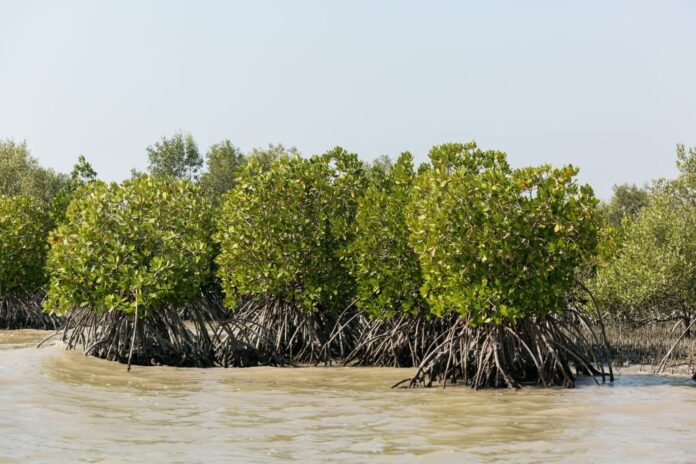ISLAMABAD: Around 16 acres of mangrove forest have been successfully restored in the Sonmiani Marsh Dam area of Balochistan, as the South China Sea Institute of Oceanology of the Chinese Academy of Sciences (SCSIO) has made smooth progress in the construction of the mangrove biodiversity and mangrove restoration demonstration zones in Pakistan.
SCSIO is leading a project titled “Database Construction of Mangrove Biodiversity in South Asia and Southeast Asia, and Construction of Anti-pollution Ecological Restoration Demonstration Zones,” which is being conducted in collaboration with the Lasbela University of Agriculture, Water & Marine Sciences (LUAWMS) in Pakistan.
As part of this project, the research team utilized the R&D technology of the Chinese Academy of Sciences to apply the mangrove anti-pollution ecological restoration afforestation technology to restore damaged coastal wetlands in Pakistan, China Economic Net reported on Tuesday.
The Pakistani side successfully completed over 16 acres of mangrove anti-pollution ecological restoration demonstration zones in the Sonmiani Marsh Dam area, which effectively promoted the protection and development of local mangroves.
Mangroves, as one of the most productive and diverse ecosystems on Earth, play a crucial role in preventing floods that could affect 39% more people annually if they were absent.
According to the International Union for Conservation of Nature (IUCN), mangroves are exceptional carbon sinks, with three to five times greater carbon storage capacity than tropical forests. They also sustain the livelihoods of over 120 million people globally and provide habitat for more than 3,000 fish species. Pakistan’s two coastal states, Sindh and Balochistan, are endowed with unique coastal ecosystems that possess a significant capacity for capturing and retaining substantial quantities of carbon dioxide (CO2).
With the technologies provided by SCSIO, the Marine Science School of LUAWMS organized a mangrove planting project and a fisherman community engagement event in the Sonmiani Marsh Dam area of Balochistan. Professor Mohammad Baloch, Executive Vice President of Lasbela University, and members of the Marine Science School also interacted with the community fishermen to discuss their livelihoods during the interaction event. Professor Mohammad Baloch said that mangroves provide fishing-based livelihoods, fuelwood, herd animal forage, and act as a natural barrier against natural disasters.




















